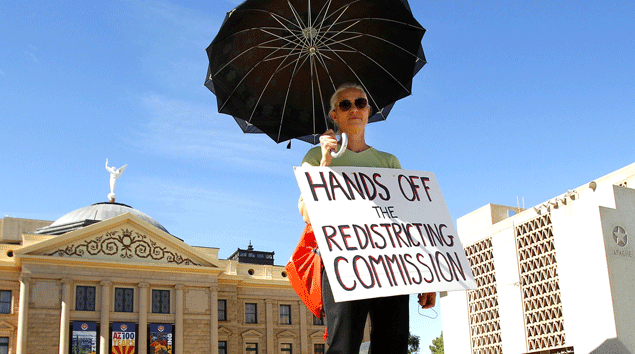-
Tips for becoming a good boxer - November 6, 2020
-
7 expert tips for making your hens night a memorable one - November 6, 2020
-
5 reasons to host your Christmas party on a cruise boat - November 6, 2020
-
What to do when you’re charged with a crime - November 6, 2020
-
Should you get one or multiple dogs? Here’s all you need to know - November 3, 2020
-
A Guide: How to Build Your Very Own Magic Mirror - February 14, 2019
-
Our Top Inspirational Baseball Stars - November 24, 2018
-
Five Tech Tools That Will Help You Turn Your Blog into a Business - November 24, 2018
-
How to Indulge on Vacation without Expanding Your Waist - November 9, 2018
-
5 Strategies for Businesses to Appeal to Today’s Increasingly Mobile-Crazed Customers - November 9, 2018
High court upholds Arizona redistricting plan
On Wednesday, the US Supreme Court unanimously upheld Arizona’s state legislative districts drawn by an independent commission, rebuffing claims by Republican voters that a minor variation in population favors Democrats and violates that US constitution.
Advertisement
“The Fourteenth Amendment’s Equal Protection Clause requires States to make an honest and good faith effort to construct [legislative] districts…as almost of equal population as is practicable”, Justice Stephen Breyer wrote for the court. The challengers said the new districts favored Democrats over Republicans by packing Republican voters into certain districts in a way that would minimize their influence in neighboring districts while enhancing the sway of Democratic voters.
“We have made clear that the Constitution, while insisting upon compliance with the principle of one person, one vote, does not demand mathematical perfection”.
Wednesday’s ruling was the second by the court this month touching upon the issue of “one person, one vote”.
In the case decided Wednesday, the bipartisan Arizona redistricting commission created new district lines using a grid system that created no more than a 4 percent deviation in any district from the state’s overall racial makeup. Because the Arizona case was brought before Shelby vs. Holder, which did away with the Voting Rights Act reviews, the suit was decided on old precedent.
The commission’s 2012 lines were challenged by Republican voters who said they put too many voters in GOP districts and too few in Democratic districts, thereby giving Democratic voters greater electoral clout.
The Arizona plan had a total population deviation among districts of 8.8 percent.
“We believe that attacks on deviations under 10% will succeed only rarely, in unusual cases”, Breyer wrote. Even though the 2013 ruling in Shelby County v. Holder relieved nine states and municipalities in six others, including Arizona, from having to meet Justice Department approval for changes in voting procedures because of past racial and ethnic discrimination, the justices said the commission had reason to comply with those rules the year before.
Gerry Hebert of the Campaign Legal Center, which lobbies for efforts to limit partisanship in redistricting, said the court “preserved the rights of minorities to elect candidates of their choice”.
Advertisement
Over the objections of the Republican members, the other commissioners moved some white voters out of two districts in order to increase the percentage of Hispanic voters in each.





























